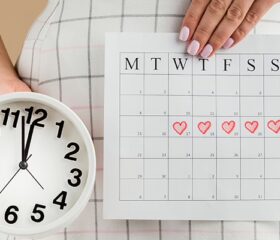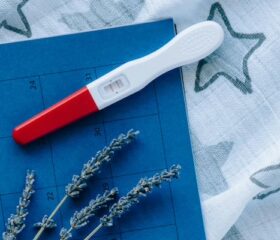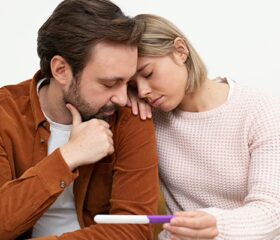Can the Moon Affect Your Menstrual Cycle?
The similarities between the length of the lunar cycle and many women’s menstrual cycles have fueled beliefs about the moon’s influence on human biology, particularly fertility, for a long time. Opinions remain split to this day.
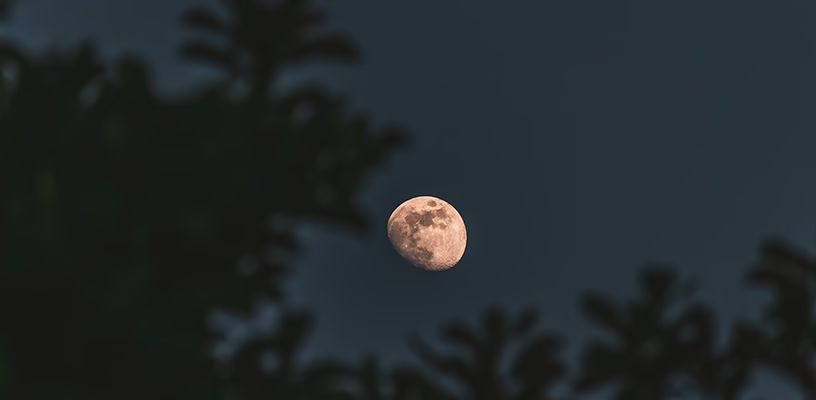
Is there solid evidence behind these age-old notions, or is it merely folklore? We’ll take a look at this hot topic—and share some data that Glow collected when it conducted its own study on this.
What’s the connection between the moon and menstrual cycles?
For centuries, many cultures around the world have speculated about a potential link between the moon and women’s menstruation.
This is because their cycles have similar lengths. On Earth, we see eight different “phases” of the moon, including the new moon (when it’s completely dark), the full moon (completely illuminated), and the various stages in between (waning and waxing crescent and gibbous, etc.).
The moon goes through these phases as it orbits around the Earth. A complete cycle takes about 29.5 days. 1 That’s very close to the length of an average menstrual cycle, which is about 28 days, measured from the start of one period to the next.
Again, that’s just an average—regular menstrual cycles can range anywhere from 24–38 days—but many women still find that their cycles sync up very closely with the moon’s. 2
The scientific debate about the moon and menstrual cycles
The scientific community has been divided on the moon-menstruation connection for decades. A lot of research has been done on this topic over the years, but scientists have yet to reach a definite conclusion.
Studies in favor of a link between the cycles
Several studies have found connections between the moon and menstrual cycles:
- One 1987 study (one of the earliest to find a link between the two types of cycles) examined four sets of data from different years and seasons and found that a statistically significant percentage of women began their periods around the full moon.
- More recently, a 2021 study analyzed long-term menstrual cycle data from 2303 European women and 721 North American women spanning 19 to 50 years. The authors suggest that while constant, universal synchronization between the cycles might not exist, individual women may experience periods of alignment.
- Another study published in that same year also found a link. Interestingly, it suggests that synchronization between the cycles may have been more pronounced in ancient times, proposing that artificial light and modern lifestyles may have “dulled” the moon’s influence.
Studies questioning the link between the cycles
The findings listed above are interesting, but not universally accepted, and other studies cast doubt on them. For instance, a 2013 year-long research piece that analyzed 74 women found no correlation between the moon’s phases and menstrual cycles.
Another 2017 study, which was produced by the company that runs the fertility app Clue (and which did not undergo peer review), looked at over 7.5 million cycles and also found no connection with the moon. It argues that there are no statistically significant patterns in when women get their periods.
Put another way—at least according to Clue—a certain percentage of women will, of course, start their cycles around either the new or full moon every month, but statistically, no more do so than you’d expect. 3
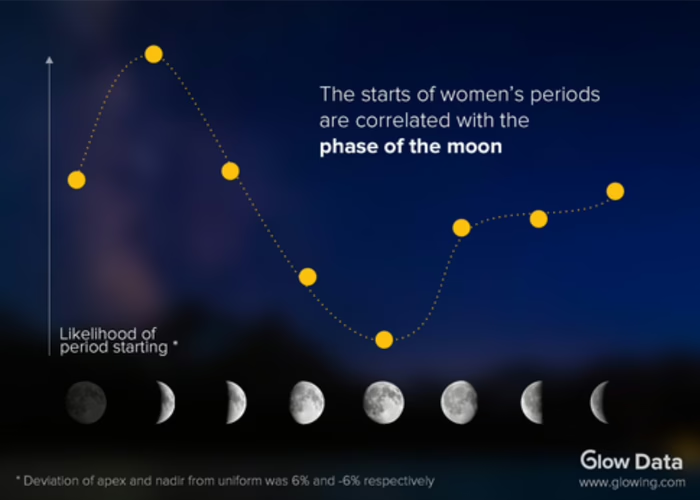
Glow’s research on the moon and menstrual cycles
Glow also conducted their own research, which they presented at the American Society of Reproductive Medicine (ASRM).
With the help of their medical advisor, Dr. Philip Chenette, Glow tested a robust sample of 38,205 cycles. This particular study did find a relationship between the cycles.
Glow’s findings on when women start their cycles
Glow’s analysis suggests that fewer women than expected get their periods when the moon is full. Conversely, more women than expected get their periods when the moon is a waxing crescent.
While this is suggestive, more research is needed to confirm the pattern (as well as determine whether there’s a causal relationship here, and if so, what it is).
Glow’s findings on menstrual cycle lengths
Glow also investigated the average length of women’s menstrual cycles. In contrast to the oft-quoted figure of 28 days, Glow’s participants had cycles with an average length of 29.9 days—significantly closer to the 29.5-day length of the lunar cycle.
Glow also found that the women whose data they analyzed were likely to believe they had 28-day cycles, even though, again, the average was slightly longer. When it comes to biological metrics like cycle length, people may have a tendency to see what they expect to see.
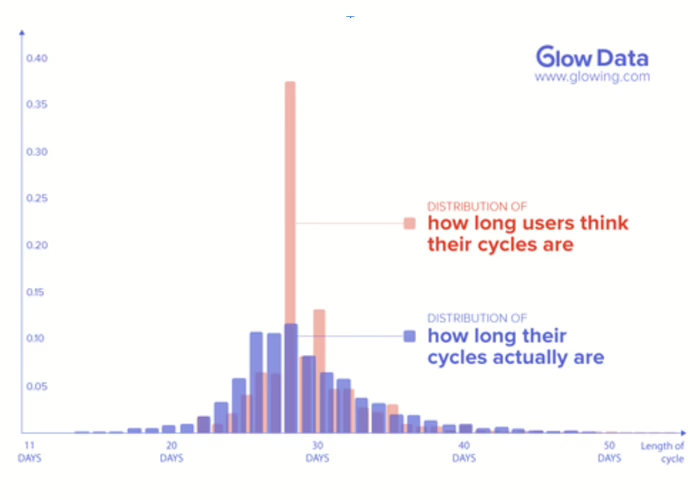
Spiritual and cultural traditions about the moon and menstrual cycles
None of the research listed above is likely to settle this issue. The scientific community will probably continue to debate the existence and nature of a moon-menstruation link for a long time.
As mentioned, this debate is very old. Many cultures have believed in a link like this for thousands of years.
Ancient roots
Many ancient cultures saw the moon as a symbol of feminine power and cyclical rhythm. In fact, the word “menstruation” shares a linguistic (etymological) root with the word for moon in ancient Greek, “mene.”
Indigenous tribes worldwide see menstruation as a time of recharging and purification. For example, women from the Ojibwe nation traditionally retreat to a secluded space (often called a “moon lodge”) to pray and rest.
Hindu and Buddhist cultures also believe in the connection between moon phases and menstrual cycles. Ayurveda (a traditional Indian medical system) holds that blood (rakta) is governed by Chandra, the moon.
Modern rituals and beliefs
Today, fewer women participate in rituals rooted in moon-menstruation beliefs. However, there are still spiritual leaders who claim there are menstrual alignments with the moon.
Although the scientific evidence for this is limited, these leaders continue to hold sessions and courses with the goal of being more in tune with their bodies and the moon’s cycles.
Can the moon affect our bodies in other ways?
The idea that the moon influences human biology isn’t limited to menstruation. A growing body of evidence suggests that there are other connections:
- Sleep patterns: A 2021 study published in Science Advances found distinct patterns in sleep duration tied to lunar phases. Their data shows that people tend to sleep fewer hours and go to bed later around the full moon, and sleep earlier and longer during the new moon. Surprisingly, these patterns were observed in both urban dwellers and those living without electricity.
- Mood and mental health: A 2017 study published in Molecular Psychiatry found that some bipolar disorder patients’ manic-depressive cycles tracked the moon’s cycles. While this isn’t universally consistent, it points to a potential (albeit complex) relationship.
- Animal behavior: The moon’s influence on navigation and reproduction is well-documented in the animal kingdom. For example, many birds use the moon to navigate, while some invertebrates regulate their reproduction cycles by synchronizing with the moon. 4
Final thoughts
At present, the scientific community hasn’t reached a consensus on whether the moon’s phases are directly connected to menstruation. More research needs to be done to paint a clearer picture.
While you explore this topic, make sure to take care of your mental and physical well-being throughout the month, no matter what’s happening up there in the sky.
Article Sources
- NASA. "Moon Phases" Retrieved June 25, 2025.
- Office on Women's Health. "Your menstrual cycle" Retrieved June 25, 2025.
- Clue. "The myth of moon phases and menstruation" Retrieved June 25, 2025.
- Discover Wildlife. "3 ways the moon affects wildlife" Retrieved June 25, 2025.
